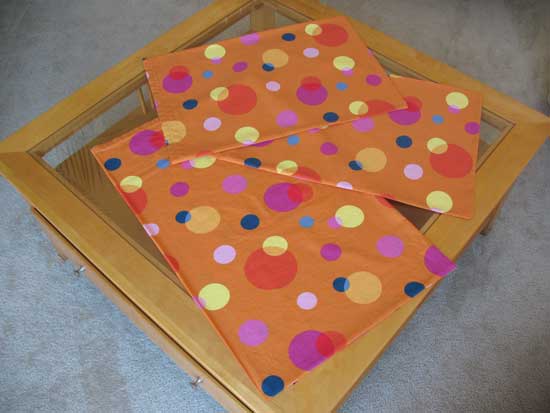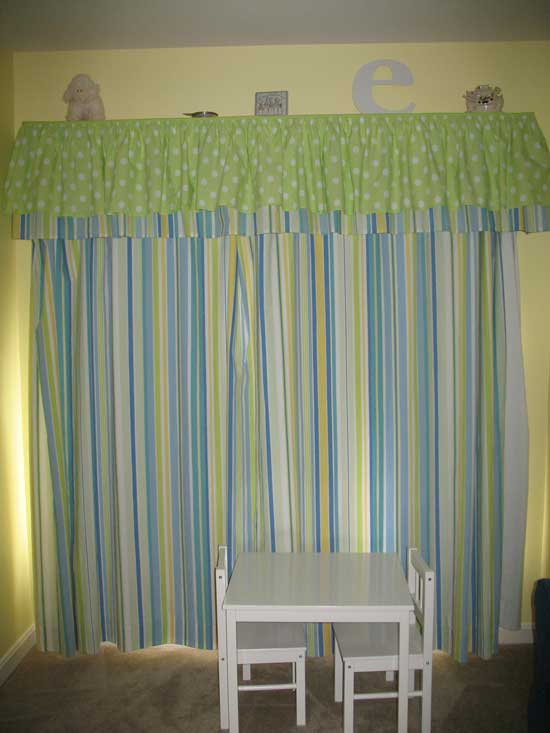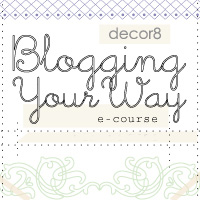When we travel, my husband and I always take our pillows with us. The big fluffy ones in hotels always end up giving us neck aches so we prefer to take our own. I am always a bit worried that they will get left behind, our neutral colored pillowcases blending into the hotel linen. Well, worry no more! I fashioned some traveling cases for our pillows to wear when they leave home. My mother always did this when I was a kid. She left our good linens at home and covered our pillows in dirt-hiding darker colors for travel. There is not much chance that these eye-poppers will get lost in a sea of white linens.

These pillowcases, as a sewing project, are not too exciting but they do give me the opportunity to talk about one of my favorite fabric sources: sheets. Sheets are fantastic for several reasons. They are an economical source of a large amount of fabric. The quality of the fabric can be quite good and you can take advantage of all of the pre-sewn hems.
The first project I ever made with sheets was a pair of Austrian shades for my dining room back in 1988. I found a lovely pair of twin sized flat sheets in a pale rose with a Jacobean print. An interesting feature of these sheets was the side seams which were bound with a contrasting ribbon. I was able to use the wide top hem as the rod pocket (it was, surprisingly, open on both ends) and had to do nothing more than sew rings onto the back of the sheet. After that project I was hooked.
Since then I have used sheets for a number of different projects. I have made dozens of crib sheets. They make great baby gifts. Depending on the size sheet you start with you can usually end up with two crib sheets (once I had to take out some of the hems to add a couple of needed inches). One real benefit of this is that you end up with a fitted sheet whose quality is much higher than most commercially available crib sheets. My favorite place to buy sheets is The Company Store. They often have great sheets in their clearance section for a very reasonable price. I’ve written a brief tutorial outlining how to make these.

Sheets also make great lined curtains. My latest ones are the pair in my son’s bedroom. I simply lined them with another sheet, turned them upside down so the sheet’s wide top hem became the curtain’s bottom hem and hung them from clip-on curtain rings. These sheets are a bright and colorful stripe and I took several of the colors to use as accents in my son’s room. I also created the matching valance. I cut off the desired length from the striped curtain using the narrow hem on the sheet as the finished edge on the valance. This became the back layer. For the front dotted layer I started with a crib skirt which was already pre-gathered (yea!). I cut the skirt panels away from the decking, pieced together enough of the skirt to make the valance and then I bound the two layers (stripes and dots) together with purchased bias tape. I sewed the soft side of some Velcro to the back of the valance and attached the hard side to the cornice so I can easily remove the valance for cleaning. In the coming weeks I will have a post on how to build your own cornice like the one in this picture.
Lastly, I use many of the leftover pieces in other projects. When my son got a little older and needed his first pillow I was able to make cases that coordinated with his crib sheets (now being used on his toddler bed). I have used other leftovers to make pillow cases for my bed pillows. Plan your case to take advantage of one of the pre-sewn hems and then sew your seams with either French seams or on a serger. Other scraps have been incorporated into quilted wall hangings and used as the backing for those same projects.
Here is a handy link that lists standard sheet and bed sizes.
I encourage you to try sewing with sheets. Once you do I think you will find lots of uses for them and become hooked just like me.
 Friday, January 14, 2011 at 8:48PM
Friday, January 14, 2011 at 8:48PM 








